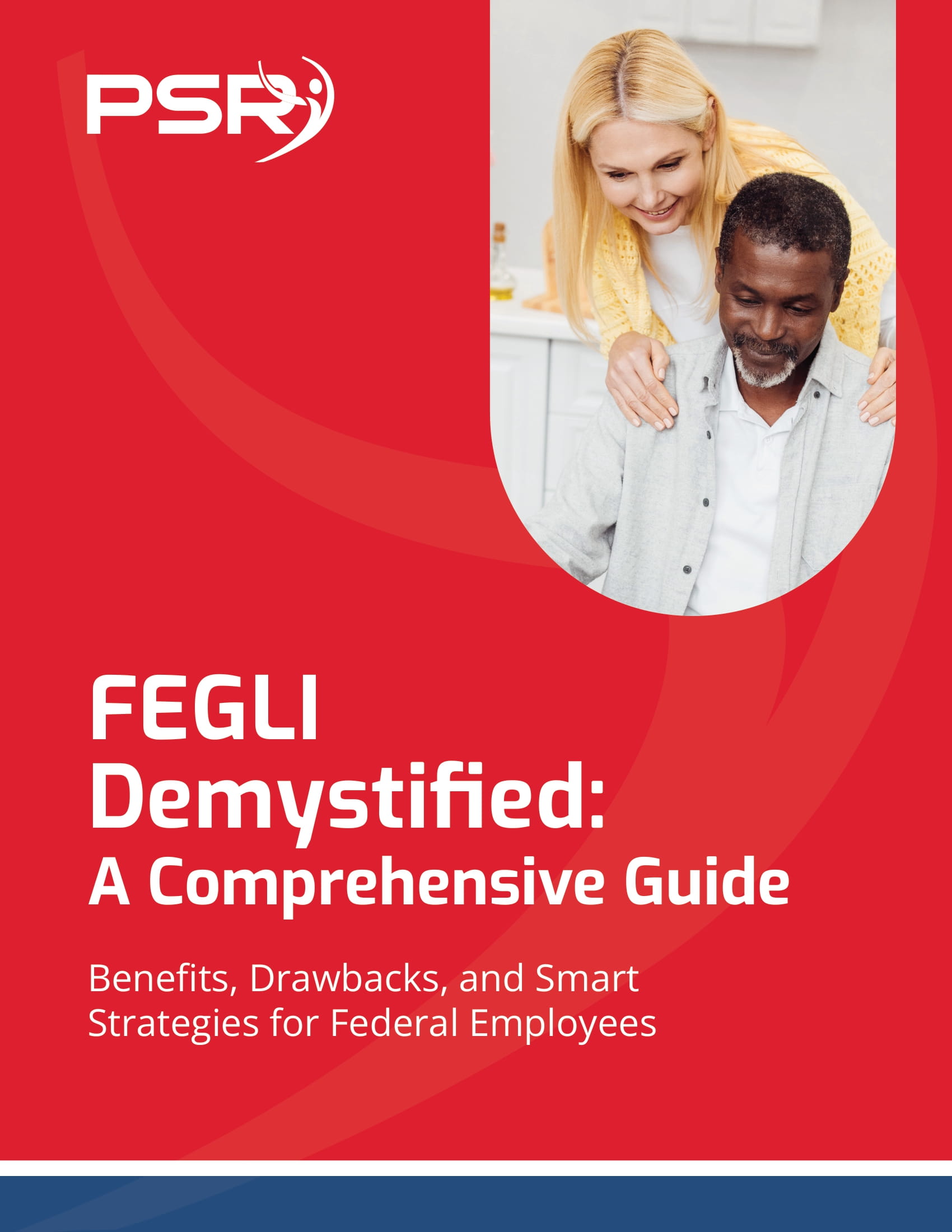Key Takeaways
-
FEGLI premiums rise steeply in retirement, potentially consuming a significant portion of your annuity.
-
Understanding your FEGLI options now can help you make smarter decisions before you retire.
What FEGLI Offers While You’re Working
The Federal Employees’ Group Life Insurance (FEGLI) program has long been marketed as a benefit that cushions your loved ones in case of the unexpected. While employed, you may find it affordable, flexible, and easy to manage. FEGLI offers:
-
Basic life insurance coverage, with the government covering a third of the premium.
- Optional coverage choices—Options A, B, and C—that allow you to customize your plan.
-
Automatic enrollment in Basic unless you opt out.
During your working years, this safety net can feel invisible and cost-effective. But as you inch closer to retirement, the same policy begins to reveal its cost.
The Turning Point at Retirement
At the time of retirement, your FEGLI premiums don’t just follow you quietly—they often explode in cost, especially for the optional coverages. Here’s what happens:
-
The government stops contributing to your premium.
-
Rates increase in five-year age bands beginning at age 50.
-
Optional coverages (especially Option B and Option C) experience the sharpest rate hikes.
For example, retirees over age 65 can see their premiums more than triple depending on the coverage and age bracket.
Your Choices at Separation
When you retire, FEGLI gives you a few different paths:
-
Continue full coverage into retirement – You’ll pay rising premiums.
-
Elect a reduced coverage option – You can keep Basic coverage for free after age 65 if you choose the 75% reduction.
-
Cancel all or part of your coverage – If the cost outweighs the benefit, this might be necessary.
Each option has long-term consequences on both your monthly budget and the death benefit your beneficiaries receive.
Why FEGLI Gets So Expensive After 65
In 2025, FEGLI premium rates continue to follow the age-based system put in place years ago. Here’s why it becomes a budget issue:
-
Premiums are designed to reflect rising risk with age.
-
Most optional coverages, especially Option B (multiple of salary), grow prohibitively costly after age 65.
-
You pay premiums monthly from your annuity, reducing your net retirement income.
This can lead to a scenario where you’re paying hundreds of dollars monthly—out of a fixed income—for coverage you once got for far less.
Understanding the 75% Reduction Option
Many federal retirees opt for the 75% reduction for Basic coverage. Here’s how it works:
-
After age 65 (and if you’re not still working), Basic coverage becomes free.
-
The coverage amount reduces by 2% each month until it reaches 25% of the original value.
This option gives you continued protection without ongoing costs, making it the most budget-friendly long-term strategy.
However, this also means your death benefit significantly decreases unless you retain full coverage at a premium.
Optional Coverages: Hidden Budget Killers
Options B and C often seem like a smart addition during active service. But in retirement, they’re often the first to break your budget.
-
Option B: Lets you insure up to 5x your salary. But in retirement, the cost increases with each 5-year age band.
-
Option C: Covers your spouse and dependent children but follows the same escalating cost curve.
If you keep these options after age 65, your premiums could rival your FEHB or Medicare costs.
Should You Replace FEGLI with a Private Policy?
It’s tempting to look outside the federal system for lower premiums or level-cost policies. But remember:
-
Private policies often require full medical underwriting.
-
Pre-existing conditions can result in denials or higher premiums.
-
Term life insurance may expire when you need it most.
For healthy retirees in their 50s or early 60s, shopping around might yield better value. But if you’re older or have health issues, replacing FEGLI may not be realistic.
Who Should Keep FEGLI After Retirement?
You might consider keeping your FEGLI coverage if:
-
You anticipate health-related denial from private insurers.
-
You want to leave a known, tax-free benefit to survivors.
-
You have no other life insurance and need to maintain at least Basic coverage.
On the other hand, canceling some or all of your coverage may be smart if:
-
You’re facing a tight retirement budget.
-
You have no dependents or survivor obligations.
-
You’ve built sufficient assets for legacy or end-of-life needs.
Timing Is Critical—Make Decisions Before Retirement
FEGLI options must often be elected or changed at specific moments:
-
Within 60 days of a qualifying life event.
-
During Open Season (rarely offered).
-
At retirement—your last real opportunity to choose how much you’ll carry into retirement.
Failing to plan means you could walk into retirement with more coverage than you need and far more cost than you expected.
Long-Term Planning Tips for FEGLI
To prepare for FEGLI’s cost impact, take these steps while you’re still working:
-
Estimate future premiums – Use OPM’s calculator to forecast costs.
-
Compare alternatives early – If you want to explore private coverage, do it before retirement.
-
Review your beneficiaries – Make sure your policy aligns with your wishes.
-
Talk to a licensed professional – Life insurance planning is personal. Get customized help.
Remember, you’re not stuck with your current setup. Adjusting your FEGLI coverage can be part of a broader strategy to preserve your retirement income.
How to Fit FEGLI into Your Broader Retirement Picture
Life insurance is just one piece of your federal retirement benefits. Make sure it complements—not competes with—your other resources:
-
Thrift Savings Plan (TSP)
-
FERS or CSRS annuity
-
Social Security
-
Health coverage (FEHB or PSHB)
If FEGLI’s costs are consuming a large share of your monthly income, it might be time to downsize coverage and shift that money toward healthcare or housing needs.
Rethinking FEGLI in Today’s Retirement Landscape
As retirement costs rise and life expectancy increases, your financial strategy needs to adapt. FEGLI, while valuable, is not sacred—it’s a tool. And tools should serve a purpose, not become a burden.
You’ve worked hard to earn your benefits. Don’t let a misunderstood insurance program quietly drain your retirement.
If you’re unsure how to balance life insurance and retirement income, get in touch with a licensed professional listed on this website. They can walk you through your choices, spot blind spots, and help you align your benefits with your future.








